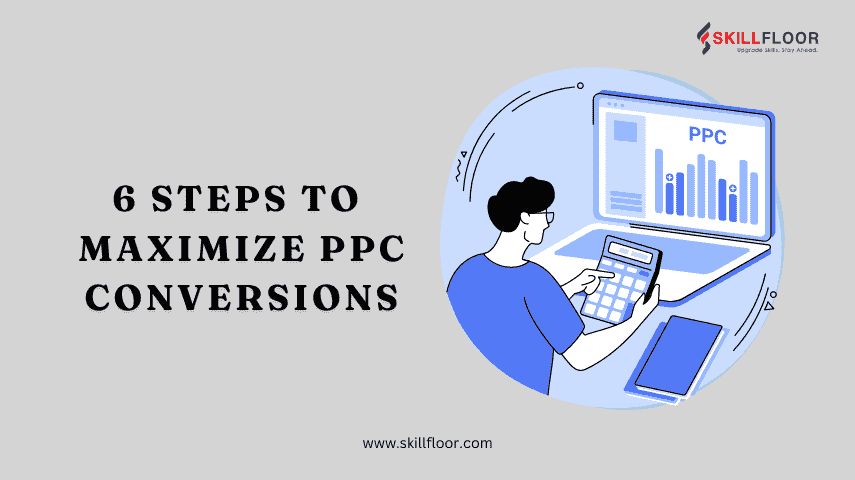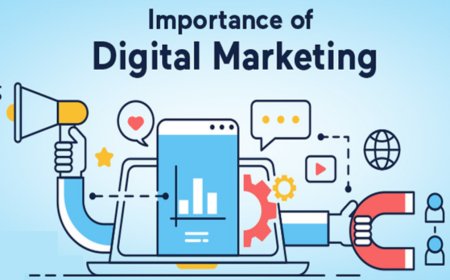How to Optimize PPC Ads for Conversions
Learn how to optimize your PPC ads for higher conversions with effective strategies, targeting, and ad copy adjustments.

You've previously heard of PPC, or pay-per-click, advertising if you run online advertisements. PPC ads are an effective tool in digital marketing that lets you post advertisements on other websites, social networking sites like Facebook, and search engines like Google. The term "pay-per-click" refers to the tiny price you pay each time a user clicks on your advertisement.
But here’s the thing: getting clicks on your ads is just the first step. When someone clicks on your advertisement, that's what counts most. Did they make a purchase? Did they sign up for your newsletter? Did they complete the action you wanted them to? When someone clicks on your advertisement and completes the intended activity, that's what we call a conversion.
What is PPC Advertising?
PPC advertising is a way to buy visits to your site rather than earning them organically. For instance, if you own a bakery and would want to advertise your just launched cupcake line, you might make an advertisement that shows up at the top of Google search results for "best cupcakes near me." In digital marketing, you will be charged each time someone clicks on the advertisement.
What is PPC Optimization?
PPC optimization is all about fine-tuning your PPC Ads and advertising to target the proper people, capture their interest, and encourage more significant actions (like sales or sign-ups). The key is to ensure that your advertising money is used effectively and that you obtain the highest return on investment by concentrating on the things that help your company achieve its goals.
What is Involved in PPC Optimization?
PPC optimization involves several crucial tasks that come together to improve your PPC ads and campaigns' impact. Here's what's typically involved:
-
Keyword Selection: Selecting keywords that your target audience is interested in and utilizing negative keywords allows you to stay clear of pointless clicks.
-
Ad Copy Refinement: Producing understandable and captivating advertising content to encourage clicks and conversions.
-
Landing Page Optimization: Making certain that the landing page is user-friendly, pertinent, and intended to turn visitors into buyers.
-
Performance Monitoring: Analyzing important performance indicators regularly, such as conversion rates, CTR, and CPC, and modifying campaigns based on data.
The Importance of Optimization
PPC advertising optimization improves campaign effectiveness, resulting in increased conversion rates and improved return on investment. The table below shows key stats that highlight its impact:
|
Key Aspect |
Impact of Optimization |
Statistics |
|
Conversion Rate |
Optimizing landing pages and ad copy can lead to higher conversion rates. |
Average increase of 25% in conversion rates |
|
Cost Efficiency |
Optimized PPC campaigns result in lower Cost-Per-Click (CPC). |
20% reduction in CPC |
|
Return on Investment (ROI) |
Regular optimization leads to higher returns on advertising spend. |
Up to 30% higher ROI |
|
User Engagement |
Relevant and targeted ads achieve higher Click-Through Rates (CTR). |
2x higher CTR for optimized ads |
|
Ad Position and Visibility |
Optimization improves Ad Rank, leading to better ad placement and visibility. |
Top 3 ad positions receive over 50% of all clicks |
How to Optimize PPC Ads for Conversions: A Simple Guide
Step 1: Keyword Selection
The correct keyword selection guarantees that your advertisements are seen by the intended audience and raises the possibility of conversions by placing your advertising in front of the searches that prospective consumers are performing.
-
Choose keywords that closely match your product or service for targeted audience reach.
-
Focus on specific, less competitive phrases for better conversion rates.
-
Exclude irrelevant search terms to avoid wasted clicks.
-
Continuously update keywords based on performance data and trends.
Step 2: Ad Copy Refinement
Creating ad text that speaks to your target demographic can boost click-through rates and motivate visitors to take the required action.
-
Create headlines that attract readers' attention and reflect their search intent.
-
Ads should have a clear, powerful call to action.
-
Highlight key elements to differentiate yourself from competitors.
-
To determine which messaging is most successful, test out several iterations.
Step 3: Landing Page Optimization
Your chances of getting visitors to convert after clicking on your advertisement are increased if your landing page is both relevant and easy to use.
-
Make sure the advertisement and landing page content are relevant to the user.
-
Create a layout that is simple to navigate.
-
Reduce bounce rates by increasing load speed.
-
Put a call-to-action that is visible and simple to discover.

Step 4: Bidding Strategy
By using an efficient bidding strategy, you can ensure that your advertising is viewed by the proper audience without going over budget for clicks, all while managing expenses and keeping competitive ad positions.
-
Select automatic or manual bidding according to the objectives of the campaign.
-
Dynamically modify bids based on the device, time, and location.
-
Give more weight to bids that result in conversions than merely clicks.
-
Effectively distribute your spending across high-performing keywords.
Step 5: Ad Extensions
Using ad extensions improves your advertising by giving users more alternatives and information, which increases their usefulness and attractiveness to potential buyers and may result in increased click-through and conversion rates.
-
Include links to user options on particular pages of your website.
-
Please provide a direct phone number.
-
To draw in local clients, put your company's address on display.
-
To boost click-through rates, draw attention to exclusive specials.
Step 6: Performance Monitoring
By keeping an eye on the effectiveness of your PPC campaign regularly, you can make data-driven changes to your plan that will help you optimize conversions while adhering to your budget.
-
Monitor CTR, CPC, and conversion rates regularly for effectiveness.
-
Adjust strategies based on performance data insights.
-
Keep an eye on competitors’ ads and tactics.
-
Review and optimize campaigns regularly for continuous improvement.
How to track PPC Conversions?
Tracking PPC conversions is essential for understanding the effectiveness of your campaigns and optimizing them for better results. Here's the information on how to track PPC conversions presented in a chart format:
|
Step |
Description |
Tools/Methods |
|
Set Up Conversion Tracking |
Implement conversion tracking directly within your PPC platform to monitor key actions. |
Google Ads, Bing Ads |
|
Use Google Analytics |
Link your PPC accounts with Google Analytics for deeper insights and to set up goals or e-commerce tracking. |
Google Analytics |
|
Implement Conversion Tracking Codes |
Place tracking pixels on your website to monitor completed actions like purchases or sign-ups. |
Google Ads Pixel, Facebook Pixel |
|
Track Phone Call Conversions |
Use unique phone numbers for campaigns and track calls as conversions. |
Call Tracking Numbers, Google Ads Call Tracking |
|
Monitor Conversion Metrics |
Regularly review conversion reports to assess campaign effectiveness and cost per conversion. |
Google Ads Dashboard, Bing Ads Reports |
|
Use UTM Parameters |
Add UTM tags to your URLs to track campaigns and analyze performance in analytics tools. |
UTM Parameters, Google Analytics |
|
Track Cross-Device Conversions |
Enable tracking across devices to capture user behavior when they switch devices before converting. |
Google Ads Cross-Device Tracking |
How to measure the success of PPC?
PPC (Pay-Per-Click) campaign success must be measured to be fully understood and to influence future optimization decisions.
-
Click-Through Rate (CTR): When your CTR is high, it means that your PPC advertisements are connecting with your target demographic, bringing in more visitors and maybe boosting conversions.
-
Conversion Rate: You can determine how well your PPC advertising campaign is performing at generating worthwhile results by tracking the number of clicks that result in a desired action.
-
Cost Per Conversion (CPC): Making sure you're getting the most out of your ad spend and budget requires keeping track of the cost of each conversion from your PPC ads.
-
Return on Ad Spend (ROAS): Your PPC Ads' profitability is measured by ROAS, which shows you how much money your company makes for every dollar spent.
-
Quality Score: This score indicates the users' relevancy to your PPC ads, which affects the placement and pricing of your ads and, in turn, affects the effectiveness of your campaign.
-
Impression Share: To make sure your PPC advertising is seen by the intended audience, keep an eye on Impression Share. This will allow you to observe how frequently your ads show in comparison to those of your rivals.
Optimizing your PPC Ads is key to driving meaningful results for your business. Better conversions are the result of concentrating on the appropriate keywords, honing ad language and making sure the landing page is user-friendly. It is possible to achieve significant improvements by consistently assessing performance and modifying your bidding approach. Always keep in mind that each adjustment you make might increase the conversion rate of your PPC ads and optimize your return on investment. Remain proactive, experiment with alternative tactics, and continuously hone your plan. By working consistently, you may increase the conversion rate of your PPC ads and convert clicks into profitable actions for your company.




























































